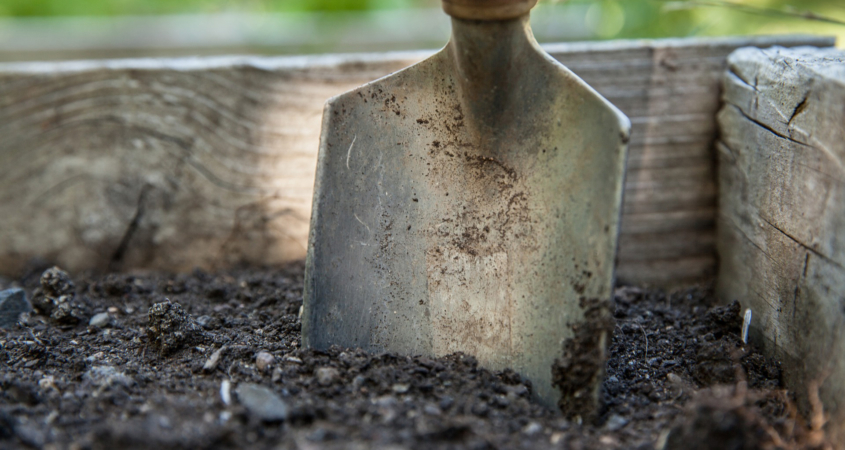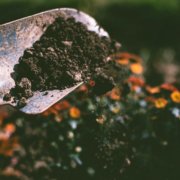Healthy soil consists of elements we don’t typically think of as soil at all. In fact, one of the most critical aspects of soil is the space between the particles.
Soil space results from a process called aggregation. Solid matter will aggregate under the right conditions, forming space between the masses. This allows air and water to fill this area. Rain or irrigation water percolates through the soil, and aggregate spaces hold it like a storage tank. You can store more water and irrigate less frequently when you have more space.
Common Soil Problems Can Be Corrected

Set yourself up for landscaping success by building the best foundation in your soil structure. Photo: Walkers Almanac/Pixabay
Check your soil aggregation by looking at the soil you dig out during a drainage test. Does it have nice clumps, or is it condensed and compacted?
Compaction is a common problem, especially in areas where grading has been done, foot traffic is heavy, or years of chemical use have killed the soil microbes. Compaction occurs when soil particles are pressed together, reducing pore space. Reduced pore space keeps air away from plant roots and stops water from infiltrating and draining.
Here’s how to tell if your soil is compacted. Take a turning fork and plunge it slowly but firmly into the ground. If your garden has a foot or more of penetrable soil, your compaction is minimal. New roots will grow easily, and water will effectively penetrate and drain. Anything less, and you probably have some soil compaction.
Using a turning fork, an aerator, or a tilling machine, you can create gaps in the soil to loosen compaction. Because it breaks up the fungal connections, it should only be done once to prepare your planting beds.
Follow all of these activities with a layer of compost to feed the soil food web to help build the aggregate spaces. Mulch can also feed healthy soil and help loosen compaction over time.
__________________________________________________

(Editor’s Note: The San Diego County Water Authority and its 24 member agencies offer programs, resources, and incentives to improve water-use efficiency for residential, commercial, and agricultural users. WaterSmart choices are a way of life in the region. Stay WaterSmart San Diego! For more water-use efficiency resources, go to WaterSmart.SD.org.)




 Sweetwater Authority Logo 2019
Sweetwater Authority Logo 2019

